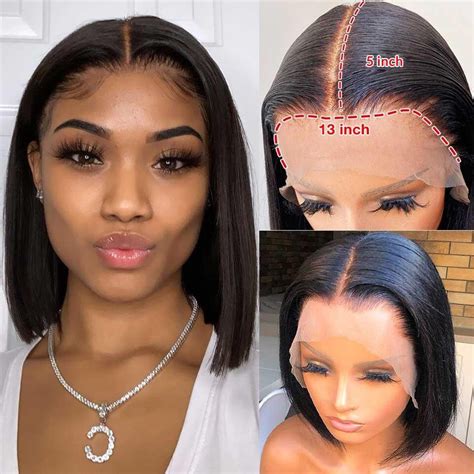Unveiling the Versatility of Lace Frontals and Lace Closures
Lace frontals and lace closures are hair extensions that have taken the beauty industry by storm. They offer an unparalleled level of customization and versatility, allowing you to create a natural-looking hairline and cover up thinning or bald spots.

Table 1: Key Differences Between Lace Frontals and Lace Closures
| Feature | Lace Frontal | Lace Closure |
|---|---|---|
| Size | Covers the entire hairline | Covers a smaller area, such as the top or crown |
| Density | Typically higher, creating a more natural look | Can vary, but generally lower than lace frontals |
| Installation | More time-consuming and requires professional expertise | Less time-consuming and can be self-installed |
| Cost | More expensive | Less expensive |
Types of Lace Frontals and Lace Closures
Lace Frontals:
- Transparent Lace: Matches all skin tones, creating an invisible hairline.
- HD Lace: Ultra-thin and transparent, providing an undetectable blend with the scalp.
- Swiss Lace: Breathable and durable, but slightly darker than transparent lace.
Lace Closures:
- Silk Base Closure: Provides a realistic scalp illusion, blending seamlessly with your natural hair.
- French Lace Closure: Transparent and durable, creating a natural-looking part.
- MicroSilk Closure: Ultralight and comfortable, designed for sensitive scalps.
Benefits of Lace Frontals and Lace Closures
- Natural Hairline: Creates the illusion of a real hairline, concealing the extension’s edge.
- Customizable Style: Allows you to experiment with different hairstyles, including ponytails, buns, and braids.
- Versatility: Can be used to cover up thinning hair, create a fuller look, or add highlights.
- Long-Lasting: With proper care, can last up to a year or more.
Market Analysis
According to a study by Allied Market Research, the global lace wig and extension market is projected to reach $16.2 billion by 2027. This includes lace frontals and lace closures, which account for a significant portion of the market.
Creative Applications of Lace Frontals and Lace Closures
In addition to traditional applications, lace frontals and lace closures can be used in innovative ways:
- Hair Accessories: Create intricate headbands and hair bows by attaching hair extensions to lace.
- Beard and Mustache Enhancement: Use lace closures to fill in patchy facial hair or create custom facial hair designs.
- Halloween Costumes: Lace frontals can transform you into iconic characters with realistic hairlines.
- Stage Performances: Enhance the visual impact of舞台表演 by using lace frontals and lace closures to create dramatic hair transformations.
Table 2: Tips for Choosing the Right Lace Frontal or Lace Closure
| Factor | Considerations |
|---|---|
| Skin Tone | Choose a lace color that matches your skin tone or opt for transparent lace. |
| Hair Type | Select a lace closure or frontal with a density that complements your hair’s thickness. |
| Lifestyle | Consider your daily activities and the time you’re willing to spend on maintenance. |
| Budget | Lace frontals are typically more expensive than lace closures. |
Table 3: Common Mistakes to Avoid When Using Lace Frontals and Lace Closures
| Mistake | Consequence |
|---|---|
| Over-Bleaching | Can damage the lace and cause it to look unnatural. |
| Using Harsh Products | Can strip the hair extensions of essential oils, making them dry and brittle. |
| Incorrect Installation | Can result in a raised or unnatural hairline. |
| Neglecting Maintenance | Can lead to matting, shedding, and a shortened lifespan. |
FAQs
1. How long can lace frontals and lace closures last?
With proper care, they can last up to a year or more.
2. Can I dye lace frontals and lace closures?
Yes, but it’s recommended to consult a professional hairstylist to avoid damage.
3. What’s the difference between a 360 lace frontal and a full lace wig?
A 360 lace frontal covers the entire circumference of the head, while a full lace wig completely covers the scalp.
4. How much does it cost to install a lace frontal or lace closure?
The cost varies depending on the location, stylist, and complexity of the installation.
5. How often should I wash my lace frontal or lace closure?
Wash it every 2-3 weeks, or more frequently if you use styling products or live in a humid climate.
6. Can I sleep in a lace frontal or lace closure?
Yes, but it’s recommended to wear a satin bonnet or scarf to protect it from tangling.
7. How do I remove a lace frontal or lace closure?
Use a gentle adhesive remover and follow the manufacturer’s instructions.
8. What’s the future of lace frontals and lace closures?
The industry is constantly innovating, with new lace materials and design advancements emerging.
